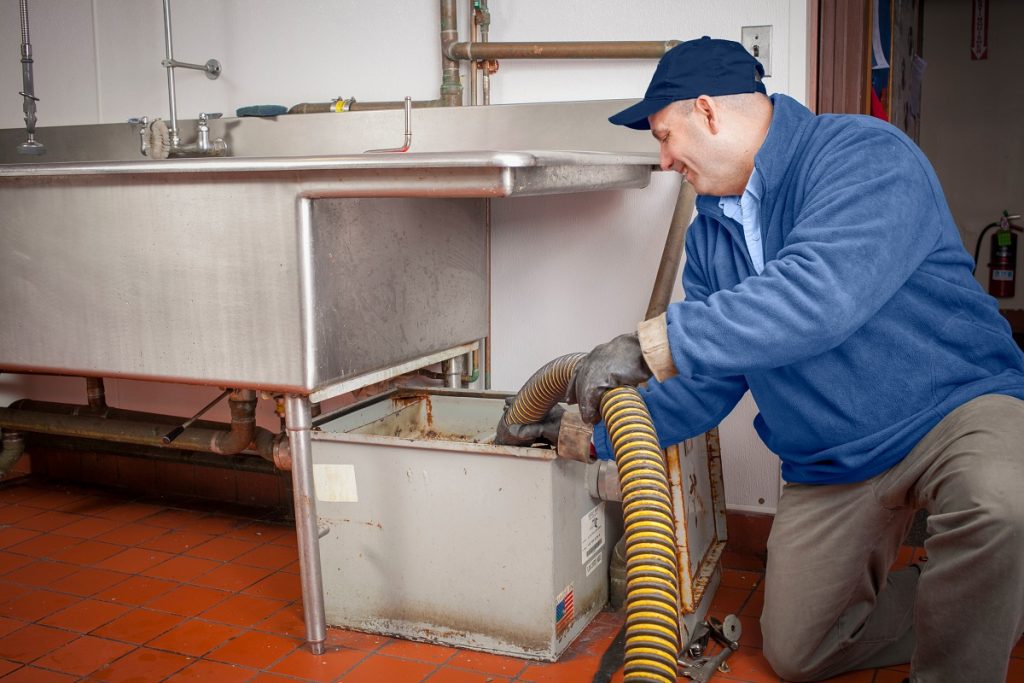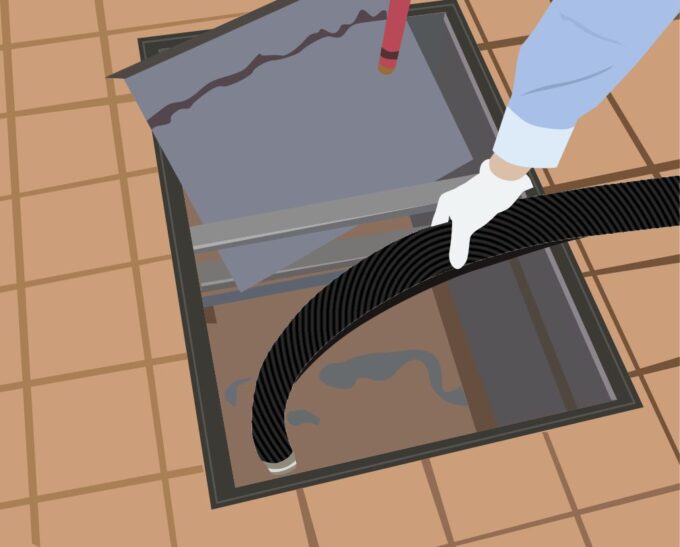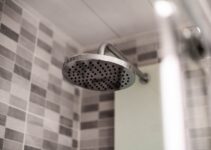Have you ever wondered how much oil and fat is used daily in an average restaurant or facility for a similar purpose? Some estimates say that the average restaurant consumes over 30 kilograms of oil per day when cooking. When you reduce that to the annual balance – the figures are almost astonishing. And where does that oil go? Oil and grease from restaurants and kitchens have special drains for wastewater. To avoid congestion of the system – special grease traps are used to help us with that. However, their maintenance is also a necessity. So many restaurateurs ask themselves: How to get rid of a heavy grease build-up? We will try to explain this to you in our guide for 2024.
What Is A Grease Trap And What Is It Used For?

Source: totalfood.com
Today, working in the hospitality, food, or processing industry – cannot function without grease traps. This component enables the normal functioning of the restaurant and the production industry. How does it work? Grease traps are used to purify wastewater from oil and grease – to prevent clogging of the sewer network. To best explain their effect – let’s take the restaurant kitchen as an example. In one such kitchen, a grease trap is an interceptor that keeps grease separate from the plumbing system. So, it prevents their accumulation in the pipes – and deposits it in special containers for easier removal. Certainly, grease traps differ in their purpose – because many are also used in the processing or food industry. However, regardless of the type – their maintenance is a necessity. Conversely, with the accumulation of fat deposits on grease traps or in water pipes – there can be big problems.
Where Does Grease Accumulate?
All the grease that washes off has to go somewhere, right? Grease traps have specially designed housing that serves to store grease from the restaurant kitchen. Most of these devices have big square containers in which fat is deposited. These grease containers can also be extremely large – depending on the need to use grease traps. There, grease accumulates – and the fatty waste is separated and floats to the surface of the wastewater, while solid waste is deposited on the bottom of the housing. Certainly, these fats that are deposited in large quantities need to be cleaned. We do this by regularly maintaining grease traps.
How Do You Get Rid Of Heavy Grease In Your Grease Traps?

Source: kaiser-battistone.com
Certainly, having in mind how fast grease accumulates on grease traps – we have to maintain them regularly, and that means cleaning above all. When it comes to cleaning and removing grease – many wonder whether to do it themselves or turn to professionals. Professionals are something that is always advised. Namely, in some countries, this is even required by regulations. Some states allow only authorized special services to do this job. However, in some countries, you are obliged to maintain grease traps – but you are allowed to do this yourself as long as you adhere to safety measures and procedures.
Why Entrust The Job Of Heavy Grease Removal To Professionals?
Primarily because of the expertise, safety, efficiency – and professional equipment they use. According to greasetrapeverett.com – when you call licensed professionals, they will do the job safely. What does it mean? Respecting all standards when it comes to cleaning grease traps, professionals will do it so that you have no fear of possible damage or the use of harmful chemicals. On the other hand, their arrival will relieve you in terms of work. So your job won’t have to wait while they do their part of the task. Certainly, there is an advantage in the use of modern machines and pumps for suction of grease as well as the use of cleaning agents that are allowed by the standard and will not harm the environment. In addition to basic cleaning, some companies also offer you the option of maintaining the installation of a grease trap, repairs – and even collecting used oil.
How Often Should Grease Traps Be Cleaned?

Source: chuteplus.com
When we talk about professional grease traps, that is, those used in restaurants, hotel kitchens, etc. – most of them must be cleaned at least 4 times a year. Professional services that deal with this use special grease pumps – as well as an appliance that cleans the grease that has accumulated in the grease collection container. Thorough professional cleaning should be done at least twice a year, regardless of your regular maintenance.
How To Get Rid Of The Grease?
Cleaning grease traps is an essential part of maintaining any commercial kitchen or food processing plant. Regular cleaning of grease traps helps ensure functionality and maintain the hygiene of kitchens and plants. Fats and oils can prevent further deposition in the drainage system after a certain time – and can cause potentially harmful blockages of the entire system, as well as installation failures. Excessive accumulation of fat in grease traps can also make disposal more difficult and become a source of unpleasant odors and potentially harmful microorganisms.
What Do We Do With Waste After Cleaning Grease Traps?

Source: issuewire.com
Waste from the grease trap is classified as controlled waste. For environmental or health protection – there must be evidence that you do the regular cleaning of grease traps – and that the waste that has been removed has been disposed of properly. Regular cleaning of grease traps and safe disposal of waste materials – must be done in an environmentally friendly way. Therefore, it is good to hire professionals who use advanced cleaning technologies for grease cleaning – and at the same time ensure that harmful waste is safely disposed of with minimal disruption to your business.
The Bottom Line
We hope that we have been able to explain to you at least in part the procedure for cleaning grease and its importance for maintaining grease traps. Without this type of maintenance, various problems caused by fat deposition can easily occur. It often happens that the drain pipes become clogged, and often the fat evaporates due to poor ventilation, bringing with it an unpleasant odor.







